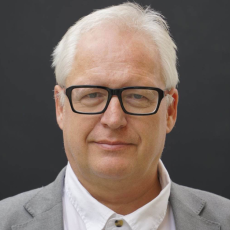What was the context that brought you to work with Techart and what is the founding story of the company?
I spent the vast majority of my career working for Audi and Volkswagen in technical project management, from the very early concept phase to launch in the factory. After my contract in Tennessee ended, I decided to look for new opportunities in the U.S., and, having known Techart from a project we did together 18 years ago, I was glad to be able to join them to support the North American operations. During these last two years spent together, I was happy to see they did not lose their typical South German family-owned vibe, which reflects in agile high-quality services especially tailored to a niche market. Porsche is already an elaborated vehicle, but Techart's passion for customization elevates its qualities to a new standard.
Thirty years ago, there were not many options to upgrade a vehicle, but as the Stuttgart area has always been an automotive melting pot, some resourceful players had a vision. At first, the founders of Techart were part of a company that was retrofitting Golf GTIs with state-of-the-art stereo systems, but as car individualization was very underdeveloped at that time, they saw an opportunity to expand into customizing other vehicle parts. Fast forward to the present, OEMs have their own aftermarket subsidiaries and try to capture this market for themselves. Techart was Porsche's supplier but they slowly evolved into offering customization services themselves, so we remained an independent aftermarket company.
What is the design process of creating a Techart customized car and how do you believe it will evolve with the electrification of the automotive space?
OEMs take about five years to design a new vehicle but for our customization products we can do it much quicker, in around 18 months. By anticipating when new Porsche models come to market, we are able to create a timeline for launching new products. It all starts with the product strategy upon which the designers and the R&D team are building extensive brainstorming sessions to arrive at the best possible design options. The prototyping phase that comes next is absolutely vital for aftermarket companies because we must obtain a perfect fitment, which is extremely challenging even for OEMs. Last but not least, we are thoroughly testing all the aerodynamic parts through the wind tunnel method. All our processes need to be TÜV certified and deemed street legal in Europe. Even with the electrification that is changing the fleets worldwide, drivers are still interested in customizing their cars.

In fact, we are one of the first players to have a program for Porsche's Taycan electric vehicle, and we have seen quite some demand for personalizing this particular model.
On the other hand, ICEs are not going to disappear anytime soon, as it was demonstrated by Porsche's successful lobby to use e-fuels in their new 911 internal combustion 6 cylinders boxer engine models for as long as possible, in an attempt to maintain their trademark signature.
What are the main challenges the company would have to face and overcome in a five-year timeframe?
The main challenge would be to keep up with the market trends that are stretched all the way between luxury supercar builds and minor modifications. As we are further developing the first category, we are also trying to remain faithful to the customers who put a simple spoiler or wheel set on their cars because that is our original DNA. A custom spoiler, for example, costs around $2,000, while a Flyweight track oriented vehicle build starts at $300,000. It is important not to stretch ourselves too thin while pursuing both trends at the same time, and capturing the market with the right investment is the biggest equation we must solve at the moment.
In terms of your passion for the automotive industry, how are you positioning yourself regarding this electrification transition?
I am an innovation geek so I am eager to embrace change. While running Audi's innovation lab in Shanghai, I worked specifically on these four megatrends that are now leading the automotive industry. The switch of the business model from owned to pay per use, the electrification of the powertrain, automation features, and digitalization are all creating a new environment that I am very excited to explore. Ultimately, as an engineer, it is extremely thrilling to be able to design this revolution and be an important part of the journey.





